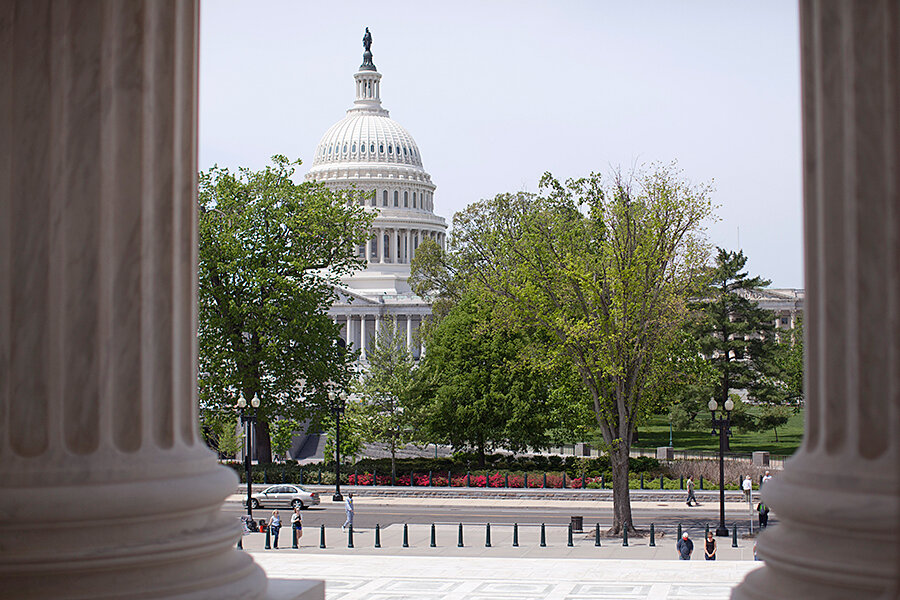Congress inches toward functionality
Loading...
| Washington
You may not have noticed, but Congress is inching its way toward functionality.
Passage of fast-track trade legislation. Agreement on how Congress will review the Iran nuclear deal. Education reform in the works. Those are just the more recent developments in a GOP-controlled Congress whose leaders want to prove they can govern.
Bit by bit, the gears are moving more smoothly, according to the “Healthy Congress Index,” compiled by the Bipartisan Policy Center, a Washington think tank.
“There is still a lot of work to be done, but the trend is moving in a direction where the American people should take notice,” said former Sen. Tom Daschle, a co-founder of the think tank, in a statement. The South Dakotan once led the Democratic majority in the Senate.
The center developed the index to try to bring accountability to Congress. Its measures are based on the center’s bipartisan recommendations for better governability in an era of hyper-partisanship. This index report – the second in a series of ongoing quarterly measures – builds on progress tracked in the first quarter.
The change is most notable in the Senate, which since January has been under Republican control and led by Mitch McConnell of Kentucky. In the first half of the year, senators spent more days working in Washington and allowed more debate and amendments than in recent Congresses, according to the index report.
The House, however, worked about the same number of days as in recent years, and it has “one of the most closed amendment processes in recent history,” the index summary reports.
Amendments offer a way for lawmakers of both parties to breathe: They allow members of Congress to vent, grandstand, and, importantly, put their inspirations on paper and into law if passed.
Both chambers, meanwhile, are seeing “robust” action in committees, where the sausage making is supposed to take place.
In recent years, more and more legislation was hatched behind closed doors, in the offices of the House and Senate leaders. That shut out the committees, not to mention the other party, and fueled gridlock. The trend began to reverse in the last Congress and has gathered steam in this one.
In April, applause broke out when a Senate committee unanimously passed an overhaul of the No Child Left Behind law – a law that has been widely panned by parents, teachers, and states. That vote prepared the way for the overhaul’s strong passage on the Senate floor last week, 81 to 17. The legislation now heads to conference to be reconciled with a contrasting House bill.
One thing that Senate majority leader McConnell did to help pass the education overhaul last week was “stay out of it,” said Sen. Lamar Alexander (R) of Tennessee, who chairs the committee that deals with education issues. “I didn’t go check with him on amendments. He let me run it with Sen. [Patty] Murray” of Washington, the ranking Democrat on the committee.
Fair warning, though. The progress may be short-lived, or stunted. The budget process has broken down as Democrats seek a way to negotiate around the budget caps of 2011, which call for across-the-board cuts. It will take tough negotiating to avoid a budgetary train wreck when lawmakers return from the August recess.
And of course, election season is looming. That tends to narrow the window for cooperation.
“After years of being moribund, Congress at least has a pulse,” said former Sen. Olympia Snowe of Maine, who is also part of the bipartisan center, in a statement. “Now, a number of difficult and divisive issues on the horizon will test whether this is truly a road to recovery from gridlock and dysfunction that will allow Congress to address the critical areas that matter to Americans.”








